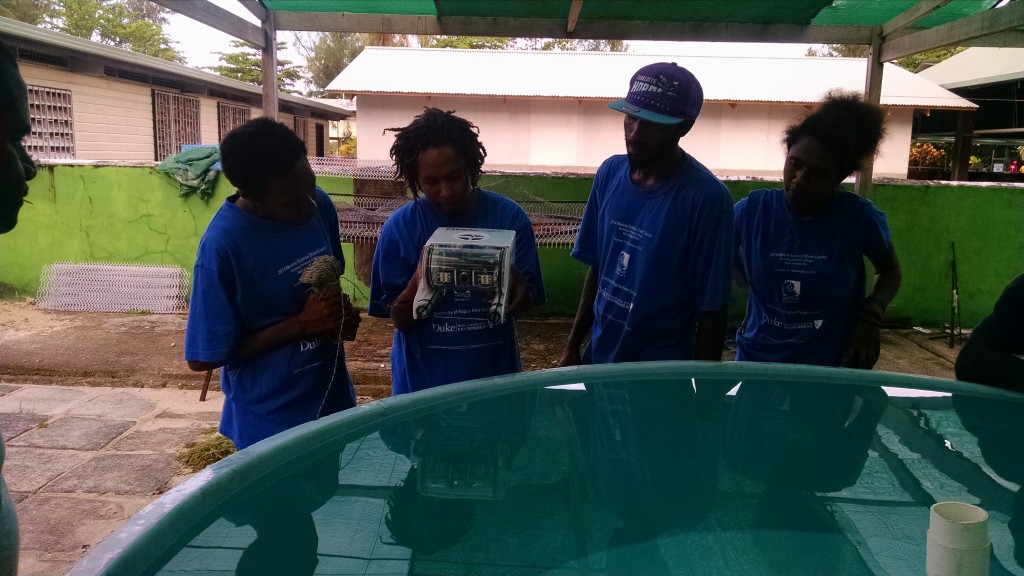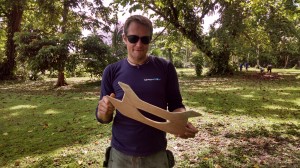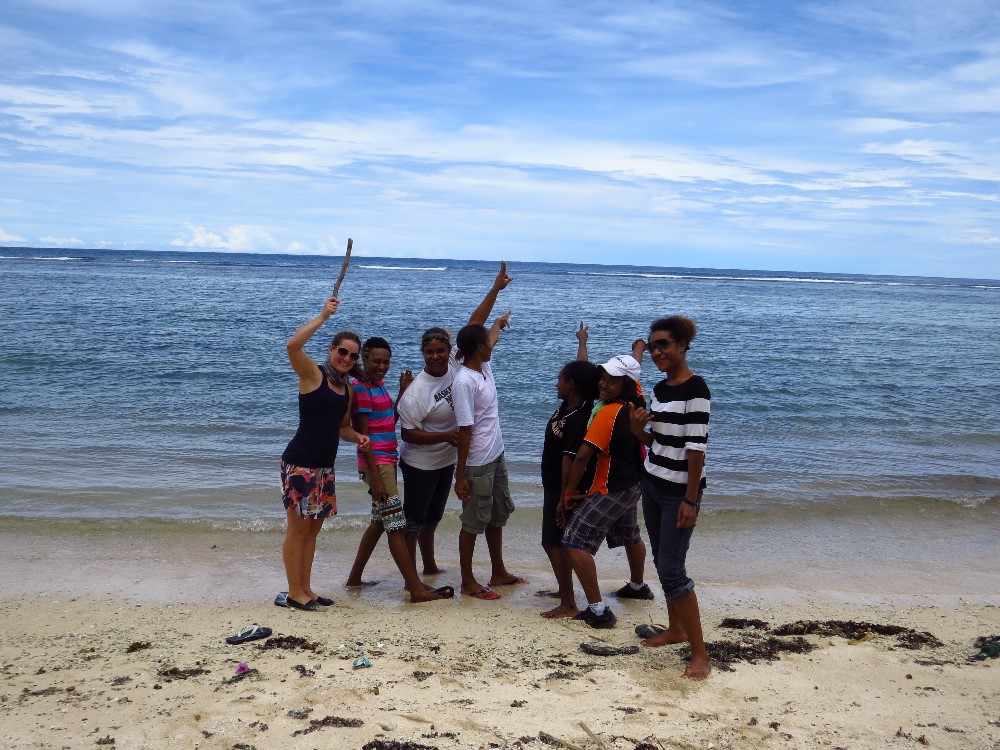Note: we’re home after an exceptional 3 weeks of work in Papua New Guinea. Sadly, the course was so intense that we weren’t able to produce updates during the program. Instead, please accept these time-shifted updates from #ROV2PNG.

With a week of robot building behind us, it’s time to put our robots, and our newly minted robot pilots to the test. Monday began with a day of tether management and pilot training. The OpenROV does not come with its own, pre-built tether management system; operators must design their own and adapt it to the unique challenges of their field environment. So we set the team off to develop their own tether management systems and the results were astounding, artistic, and clever.

With tethers securely managed, it was time for Erika’s Pilot Academy. As some teams continued to perform maintenance and troubleshooting, and some worked on their ecology projects, others were led, group by group, to the test tank, where Erika and Dominik had built a challenge course for them to fly. Without looking at the tank or robot, each student had to pilot an ROV around the tank, collect a weighted target, and bring it to the surface. Even for veteran OpenROV pilots, this exercise can be challenging. We closed out the first day of pilot training with 23 skilled pilots.
Salt water testing began the next morning, as each group, now divided into their ecology teams rather than their ROV build teams, set up their command center at one of three stations around the island. Instructors sat back, allowing the students to go through the complete pre-dive start-up routine, unaided. We felt tremendous pride as, one-by-one, each robot entered the waters and navigated around the reef, sand flats, and seagrass beds. Though we found a few bugs in a couple of robots, all were able to perform in salt water without failure.

And that’s a good thing, because that afternoon, we began the final phase of the program: ecology projects.